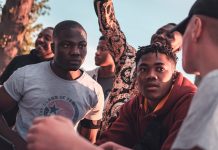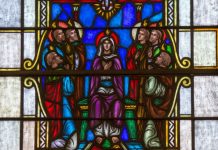
by John Blazo, M.M.
I love my ministry as a mission educator. It allows me to share my overseas experiences in Guatemala and Nicaragua and make connections between people there and people here. After all, we are all brothers and sisters of Jesus.
The U.S. bishops have reminded us: A parish reaching beyond its own membership and beyond national boundaries is a truly catholic parish. An important role for the parish is to challenge and encourage every believer to greater global solidarity.
This is what I try to do as a mission educator, primarily with young people. I aim to bring the world to the youth I meet in the Catholic schools and religious education programs I visit on the U.S. East Coast.
To Fellow Mission Educators
In one sense, my ministry is getting easier as Catholics young and old are being exposed to more people of other lands and cultures through media, immigration, and foreign clergy and laity working in more and more parishes. I capitalize on this reality as I try to get across Jesus’ message that God loves people everywhere.
Here are some ideas I’d like to share with fellow mission educators as they work to expand young hearts and minds to the needs of God’s children everywhere:
* Start with students’ experiences. Ask: Who is my neighbor? Is it difficult to understand people of different backgrounds? What does Jesus tell us about being a good neighbor? Find examples in the Gospels.
* Use religious artifacts such as crucifixes and holy cards that depict Jesus and Mary in multicultural ways to show the universality of Jesus’ message and therefore the Church’s message.
* Celebrate feast days of saints from other countries such as St. Josephine Bakhita (Sudan), St. Paul Miki and Companions (Japan), and St. Augustine Zhao Rong (China). You can get biographical sketches of these saints online.
* Use mission magazines to show people around the world using different prayer forms, building different styles of churches, living their lives quite differently or maybe similarly to ours in the United States. Have students research a day in the life of someone their age in another country.
* Use songs with missionary themes about spreading the Good News. Have children learn the songs and discuss the content, pointing out that we are all called in Baptism to be missioners—that is, messengers of God’s love.
* Twinning is the linking of parishes and dioceses here in the U.S. with dioceses and parishes overseas. Invite those who have participated in a twinning project to talk to students and teachers to explain what they did and what they learned. Read letters from the pope and bishops that support such activity.
*Ask students from different ethnic backgrounds to explain how they celebrate birthdays, major religious holidays, and secular holidays, and how their cultures honor the dead. Note similarities and differences to U.S. customs.
A Lifetime Learning Experience
Above all, remember that mission education is a lifetime learning experience. We never reach the point of knowing everything about another land or culture. Therefore, stress with youngsters the need to be open to others all through life.
When we see and talk about other lands and cultures, the tendency is to see only violence, poverty, disease, etc., and we react with wanting to help them. However, when we see other aspects of people’s lives—celebrations, sorrows at illness or death—we realize that we all have the same basic needs, desires, hopes, and dreams. We just might express them differently.
In teaching this important lesson, we need to emphasize that mission is two-way: We give and we receive. Those of us who have served overseas often remark, “I received more than I gave.” The people of Central America certainly enriched my life. Encourage U.S. children to consider the gifts that we all have received from people of other lands.
Educating children to cross-cultural mission not only expands the world for them but also may be a way for the children to evangelize the adult parish community! That’s mission education at its best.
Brother John Blazo, from Hempstead, NY, has been doing mission education work on the U.S. East Coast for 25 years. He has been a Maryknoll Brother since 1963.
Copyright 2011, Bayard, Inc. All rights reserved. This article is protected by United States copyright and other intellectual property laws and may not be reproduced, rewritten, distributed, redisseminated, transmitted, displayed, published or broadcast, directly or indirectly, in any medium without the prior written permission of Bayard, Inc.




